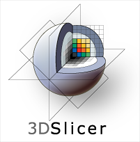 W
W3D Slicer (Slicer) is a free and open source software package for image analysis and scientific visualization. Slicer is used in a variety of medical applications, including autism, multiple sclerosis, systemic lupus erythematosus, prostate cancer, lung cancer, breast cancer, schizophrenia, orthopedic biomechanics, COPD, cardiovascular disease and neurosurgery.
 W
WAdobe Photoshop is a raster graphics editor developed and published by Adobe Inc. for Windows and macOS. It was originally created in 1988 by Thomas and John Knoll. Since then, the software has become the industry standard not only in raster graphics editing, but in digital art as a whole. The software's name has thus become a generic trademark, leading to its usage as a verb although Adobe discourages such use. Photoshop can edit and compose raster images in multiple layers and supports masks, alpha compositing and several color models including RGB, CMYK, CIELAB, spot color, and duotone. Photoshop uses its own PSD and PSB file formats to support these features. In addition to raster graphics, Photoshop has limited abilities to edit or render text and vector graphics, as well as 3D graphics and video. Its feature set can be expanded by plug-ins; programs developed and distributed independently of Photoshop that run inside it and offer new or enhanced features.
 W
WAmira is a software platform for 3D and 4D data visualization, processing, and analysis. It is being actively developed by Thermo Fisher Scientific in collaboration with the Zuse Institute Berlin (ZIB), and commercially distributed by Thermo Fisher Scientific.
 W
WAnalysis of Functional NeuroImages (AFNI) is an open-source environment for processing and displaying functional MRI data—a technique for mapping human brain activity.
 W
WThe Aphelion Imaging Software Suite is a software suite that includes three base products - Aphelion Lab, Aphelion Dev, and Aphelion SDK for addressing image processing and image analysis applications. The suite also includes a set of extension programs to implement specific vertical applications that benefit from imaging techniques.
 W
WAvizo is a general-purpose commercial software application for scientific and industrial data visualization and analysis.
 W
WBlingee is an online animated GIF creator that allows users to create layered images using original photographs and artwork combined with user-generated ornamentation, referred to as "stamps."
 W
WCONN is a Matlab-based cross-platform imaging software for the computation, display, and analysis of functional connectivity in fMRI in the resting state and during task.
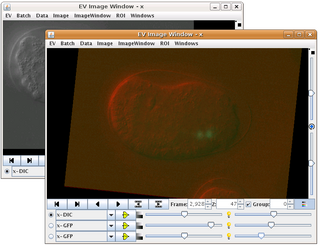 W
WEndrov is an open-source plugin architecture aimed for image analysis and data processing. Being based on Java, it is portable and can both be run locally and as an applet. It grew out of the need for an advanced open source software that can cope with complex spatio-temporal image data, mainly obtained from microscopes in biological research. It lends much of the philosophy from ImageJ but aims to supersede it by having a more modern design.
 W
WFiji is an open source image processing package based on ImageJ.
 W
WThe FMRIB Software Library, abbreviated FSL, is a software library containing image analysis and statistical tools for functional, structural and diffusion MRI brain imaging data.
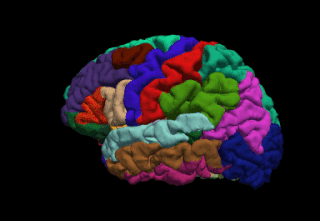 W
WFreeSurfer is a brain imaging software package originally developed by Bruce Fischl, Anders Dale, Martin Sereno, and Doug Greve. Development and maintenance of FreeSurfer is now the primary responsibility of the Laboratory for Computational Neuroimaging at the Athinoula A. Martinos Center for Biomedical Imaging. FreeSurfer contains a set of programs with a common focus of analyzing magnetic resonance imaging (MRI) scans of brain tissue. It is an important tool in functional brain mapping and contains tools to conduct both volume based and surface based analysis. FreeSurfer includes tools for the reconstruction of topologically correct and geometrically accurate models of both the gray/white and pial surfaces, for measuring cortical thickness, surface area and folding, and for computing inter-subject registration based on the pattern of cortical folds.
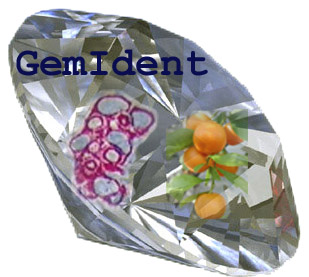 W
WGemIdent is an interactive image recognition program that identifies regions of interest in images and photographs. It is specifically designed for images with few colors, where the objects of interest look alike with small variation. For example, color image segmentation of:Oranges from a tree Stained cells from microscopic images
 W
WGinkgo CADx is a multi platform DICOM viewer (*.dcm) and dicomizer. Ginkgo CADx is licensed under LGPL license, being an open source project with an Open core approach. The goal of Ginkgo CADx project is to develop an open source professional DICOM workstation.
 W
WGNU Octave is software featuring a high-level programming language, primarily intended for numerical computations. Octave helps in solving linear and nonlinear problems numerically, and for performing other numerical experiments using a language that is mostly compatible with MATLAB. It may also be used as a batch-oriented language. Since it is part of the GNU Project, it is free software under the terms of the GNU General Public License.
 W
WHDR PhotoStudio is a discontinued high dynamic range (HDR) graphics application developed by Unified Color for Windows and macOS operating systems. In addition to being a HDR-merge application, HDR PhotoStudio offered a set of image editing operations that work in its dynamic range, human color range (gamut), and in high precision. It also had a Color Integrity feature that allowed users keeping an image's color tone during HDR PhotoStudio image editing operations — for example changing the contrast of an image would not change image's chromatic data. This problem is usually referred to as "color shift".
 W
WImageJ is a Java-based image processing program developed at the National Institutes of Health and the Laboratory for Optical and Computational Instrumentation. Its first version, ImageJ 1.x, is developed in the public domain, while ImageJ2 and the related projects SciJava, ImgLib2, and SCIFIO are licensed with a permissive BSD-2 license. ImageJ was designed with an open architecture that provides extensibility via Java plugins and recordable macros. Custom acquisition, analysis and processing plugins can be developed using ImageJ's built-in editor and a Java compiler. User-written plugins make it possible to solve many image processing and analysis problems, from three-dimensional live-cell imaging to radiological image processing, multiple imaging system data comparisons to automated hematology systems. ImageJ's plugin architecture and built-in development environment has made it a popular platform for teaching image processing.
 W
WImageNets is an open source framework for rapid prototyping of machine vision algorithms, developed by the Institute of Automation.
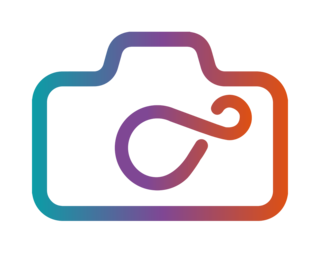 W
WInfltr, the conflation of "infinite filters" is an image editing app for Apple iOS devices. The first version of the mobile app was launched in August 2015 as an alternative to the standard iOS camera app.
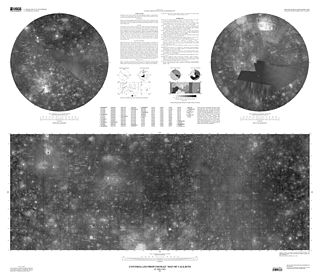 W
WIntegrated Software for Imagers and Spectrometers, also abbreviated to Isis, is a specialized software package developed by the USGS to process images and spectra collected by current and past NASA planetary missions sent to Earth's Moon, Mars, Jupiter, Saturn, and other solar system bodies.
 W
WInVesalius is a free medical software used to generate virtual reconstructions of structures in the human body. Based on two-dimensional images, acquired using computed tomography or magnetic resonance imaging equipment, the software generates virtual three-dimensional models correspondent to anatomical parts of the human body. After constructing three-dimensional DICOM images, the software allows the generation of STL (stereolithography) files. These files can be used for rapid prototyping.
 W
WITK-SNAP is an interactive software application that allows users to navigate three-dimensional medical images, manually delineate anatomical regions of interest, and perform automatic image segmentation. The software was designed with the audience of clinical and basic science researchers in mind, and emphasis has been placed on having a user-friendly interface and maintaining a limited feature set to prevent feature creep. ITK-SNAP is most frequently used to work with magnetic resonance imaging (MRI), cone-beam computed tomography (CBCT) and computed tomography (CT) data sets.
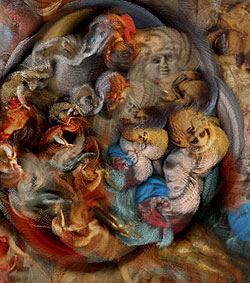 W
WThe Kaleidica Light Instrument, is software developed by Chuck Henderson and published by Fishrock Studios for creating symmetrical and abstract pattern art, animations and real-time user-generated light-shows much like a mechanical kaleidoscope. Kaleidica creates imagery and script-generated animations based on a number of geometric algorithms that arrange arrays of images or animation clips in various user-determined patterns. Composed of multiple internal "studios," Kaleidica can produce patterns reminiscent of kaleidoscope art, Arabic tapestries, psychedelic "op-art," mandala and yantra meditative patterns, and abstract forms akin to Kandinsky or Renoir. Kaleidica uses images as brushes that are selected from a collection of image libraries. Images libraries can be changed and new libraries can be created by users. Animated brush effects are created by cycling through a series of images creating three dimensional and abstract effects.
 W
WMango is a non-commercial software for viewing, editing and analyzing volumetric medical images. Mango is written in Java, and distributed freely in precompiled versions for Linux, Mac OS and Microsoft Windows. It supports NIFTI, ANALYZE, NEMA and DICOM formats and is able to load and save 2D, 3D and 4D images.
 W
WMedical imaging is the technique and process of creating visual representations of the interior of a body for clinical analysis and medical intervention, as well as visual representation of the function of some organs or tissues (physiology). Medical imaging seeks to reveal internal structures hidden by the skin and bones, as well as to diagnose and treat disease. Medical imaging also establishes a database of normal anatomy and physiology to make it possible to identify abnormalities. Although imaging of removed organs and tissues can be performed for medical reasons, such procedures are usually considered part of pathology instead of medical imaging.
 W
WMeVisLab is a cross-platform application framework for medical image processing and scientific visualization. It includes advanced algorithms for image registration, segmentation, and quantitative morphological and functional image analysis. An IDE for graphical programming and rapid user interface prototyping is available.
 W
WMicroDicom is a free DICOM viewer for Windows. MicroDicom is application for primary processing and preservation of medical images in DICOM format. It is possible to open DICOM images produced by medical equipment. It is also possible to open other image formats - BMP, GIF, JPEG, PNG, TIFF, .... It is equipped with most common tools for manipulation of DICOM images and it has an intuitive user interface. It is free to use and easily accessible to most. It has also been used by the U.S. Department of Veterans' Affairs to get medical data on their state of health.
 W
WMaterialise Mimics is an image processing software for 3D design and modeling, developed by Materialise NV, a Belgian company specialized in additive manufacturing software and technology for medical, dental and additive manufacturing industries. Materialise Mimics is used to create 3D surface models from stacks of 2D image data. These 3D models can then be used for a variety of engineering applications. Mimics is an acronym for Materialise Interactive Medical Image Control System. It is developed in an ISO environment with CE and FDA 510k premarket clearance. Materialise Mimics is commercially available as part of the Materialise Mimics Innovation Suite, which also contains Materialise 3-matic, a design and meshing software for anatomical data. The current version is 20.0, it supports Windows 10, Windows 7, Vista and XP in x64.
 W
WMountains is an image analysis and surface metrology software platform published by the company Digital Surf. Its core is micro-topography, the science of studying surface texture and form in 3D at the microscopic scale. The software is dedicated to profilometers, 3D light microscopes ("MountainsMap"), scanning electron microscopes ("MountainsSEM") and scanning probe microscopes ("MountainsSPIP").
 W
WOpenCV is a library of programming functions mainly aimed at real-time computer vision. Originally developed by Intel, it was later supported by Willow Garage then Itseez. The library is cross-platform and free for use under the open-source Apache 2 License. Starting with 2011, OpenCV features GPU acceleration for real-time operations.
 W
WSynopsys Simpleware ScanIP is a 3D image processing and model generation software program developed by Synopsys Inc. to visualise, analyse, quantify, segment and export 3D image data from magnetic resonance imaging (MRI), computed tomography (CT), microtomography and other modalities for computer-aided design (CAD), finite element analysis (FEA), computational fluid dynamics (CFD), and 3D printing. The software is used in the life sciences, materials science, nondestructive testing, reverse engineering and petrophysics.
 W
WSimpleITK is a simplified, open-source interface to the Insight Segmentation and Registration Toolkit (ITK). The SimpleITK image analysis library is available in multiple programming languages including C++, Python, R, Java, C#, Lua, Ruby and Tcl. Binary distributions are available for all three major operating systems.
 W
WStudierfenster is a free, non-commercial Open Science client/server-based Medical Imaging Processing (MIP) online framework. It offers capabilities, like viewing medical data in two-dimensional (2D) and three-dimensional space (3D) directly in a standard web browser, like Google Chrome, Mozilla Firefox, Safari or Microsoft Edge. Other functionalities are the calculation of Medical Metrics, manual slice-by-slice outlining of structures in medical images (segmentation), manual placing of (anatomical) landmarks in medical image data, viewing medical data in Virtual Reality (VR) and a facial reconstruction and registration of medical data for Augmented Reality (AR).
 W
WTomoPy is an open-sourced Python toolbox to perform tomographic data processing and image reconstruction.
 W
Wtomviz is an open source software platform for reproducible volumetric visualization and data processing. The platform is designed for a wide range scientific applications but is especially tailored to high-resolution electron tomography, with features that allow alignment and reconstruction of nanoscale materials. The tomviz platform allows graphical analysis of 3D datasets, but also comes packaged with Python, NumPy, and SciPy tools to allow advanced data processing and analysis. Current version is 1.7.
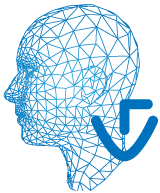 W
Wvisage|SDK is a multiplatform software development kit (SDK) created by Visage Technologies AB. visage|SDK allows software programmers to build a wide variety of face and head tracking and eye tracking applications for various operating systems, mobile and tablet environments, and embedded systems, using computer vision and machine learning algorithms.
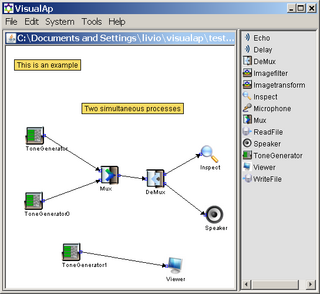 W
WVisualAp is a visual framework for building applications and emulate systems. VisualAp is cross-platform as it is a 100% Java application.
 W
WThe Wolfram Language is a general multi-paradigm computational language developed by Wolfram Research. It emphasizes symbolic computation, functional programming, and rule-based programming and can employ arbitrary structures and data. It is the programming language of the mathematical symbolic computation program Mathematica.
 W
WWolfram Mathematica is a modern technical computing system spanning most areas of technical computing — including neural networks, machine learning, image processing, geometry, data science, visualizations, and others. The system is used in many technical, scientific, engineering, mathematical, and computing fields. It was conceived by Stephen Wolfram and is developed by Wolfram Research of Champaign, Illinois. The Wolfram Language is the programming language used in Mathematica.